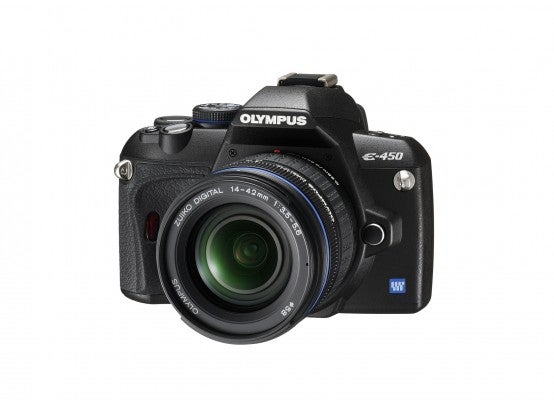Is the Olympus E-450 just a minor refresh or a feature-filled model worth considering? What Digital Camera reviews the latest entry-level DSLR in the Four Thirds system.
Olympus E-450 Review
Olympus E-450 image quality
Exposure and Tone
The camera does well to expose a variety of scenes correctly. I found the combination of evaluative exposure and the Auto Shadow Adjustment option seemed to give the most reliable results, although the Shadow and Highlight Spot options also found themselves useful.

Colour and White Balance
As with most DSLRs, the E-450 struggles a little under artificial lighting, with slightly warm results. For skin tones for example this can make them look a little too rosy and saturated, but this is easily rectified in camera or post-processing. Performance in daylight was generally accurate, although there were a number of occasions where images were either a little too cold or a little too warm for no apparent reason. Colours are perhaps a little more muted than we may expect, although with no ‘Standard’ colour option the default setting is ‘Natural’ – which goes some way to explain why this is so.
Raw and JPEG
As I found with the E-620, the differences between Raw and JPEG files from the E-450 are so slight you really have to look for them. At times JPEGs appear a little sharper which can slightly bring out noise, and colours show a touch more saturation than the Raw files, though some of the images I shot showed a noticeable (and welcome) boost in contrast over the more neutral Raw files. Everything else, from detail, noise and control over chromatic aberrations seems to be very similar in both.
Detail and Sharpness
In conjunction with a good lens, the camera is capable of capturing very good detail (for a model of the E-450’s calibre), but this is only realised when files have been processed by the user. Noise reduction is advisable before sharpening, as the latter can accentuate the slight graininess present in many of the E-450’s images, typically those shot at ISO 400 and above.
Noise
In my review of the Olympus E-620, I noted that the camera was slightly noisier than the E-520, which is likely to come as a result of its more populated sensor (12MP vs 10MP). I was, however, keen to see what sort of results a less populated sensor (ie. the E-450’s) would turn out in combination with Olympus’s latest TruePic III+ processor. A comparison between the three shows the E-620 to still be the nosiest, though the differences between the E-450’s and E-520’s are less obvious. There is, however, slightly less noise in the E450’s images, suggesting that the new processor is making some difference, though on a practical level this will be largely insignificant. There also seems to be an similar amount of banding visible in images from the E-450 and E-520, suggesting the sensor in both is similar, if not identical.








